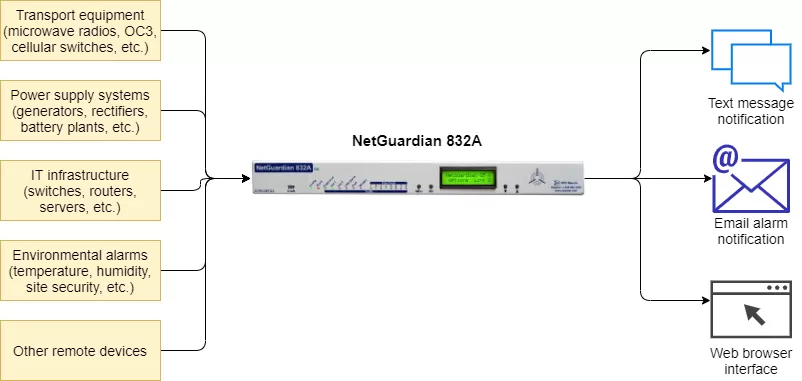Check out our White Paper Series!
A complete library of helpful advice and survival guides for every aspect of system monitoring and control.
1-800-693-0351
Have a specific question? Ask our team of expert engineers and get a specific answer!
Sign up for the next DPS Factory Training!

Whether you're new to our equipment or you've used it for years, DPS factory training is the best way to get more from your monitoring.
Reserve Your Seat TodayIf you work on the development of gear network monitoring systems, you've likely heard about Programmable Logic Controllers (PLCs) and Remote Telemetry/Terminal Units (RTUs). These devices are used for supervisory control and data acquisition (SCADA) and many people think they know how these devices are different. What is the real distinction between an RTU and a PLC?
Let's start by observing that some of the confusion is due to increasing overlap in the design and features of PLCs and RTUs. Having said that, the most significant PLC/RTU differences are most likely in size and capacities. An RTU typically has more inputs/outputs than a PLC. Commonly it also has more local processing power to work with collected data before it sends alerts to a central console (HMI) or directly to you.
For instance, a PLC can be quite small; perhaps a single sensor and a communications interface to output sensor data. Contrast that to an RTU that may have dozens of inputs and sometimes nearly as many relay outputs. And RTU inputs can be of a lot of types including discrete contact closures and analog measurement circuits (generally either 0-5vDC or 4-20mA). As an example, the NetGuardian 832A (mfr: DPS Telecom) has 32 discrete contact inputs, 8 analog inputs, and 8 relay outputs.

RTUs also tend to have more auxiliary capabilities. This is especially true at the upper end of the market. Using our same example, the 832A RTU has a built-in 10/100 switch, 8 serial ports for connecting other devices, and 2 backup reporting methods in addition to standard LAN. Its standard temperature range is quite wide, and it can be extended with a build option that uses more rugged parts.
Can a PLC ever be the right choice? Yes. In certain situations where you have a lot of processes happening in one space, like in a manufacturing facility, PLCs can work. Since such a facility also will have environmental controls, you don't necessarily need the wide temperature range and rugged build quality you get with a good RTU. The fact that PLCs have few inputs makes them a more liquid resource. You can move PLCs as needed, and ordering additional/different PLC models will most likely be less expensive.
In most other environments, however, an RTU is superior. If you have gear at a location, it should have automated monitoring. Even if the location is staffed, many problems don't make an obvious noise or emit a visual cue like smoke until it's much too late. Using RTUs will be more cost-effective in the medium to long run since you can monitor dozens of things with just one power supply, one chassis, etc.
Since your gear won't be moving very often, a single deployment should meet your needs for years (just make sure to have enough room left over on your RTU to allow for expansion, or make sure your manufacturer offers expansion chassis like the NetGuardian DX).
I hope this guide has been helpful for you as you work to know your PLC/RTU options. This is an important decision, and I encourage you to explore the rest of this site as you conduct further research.
To see some real-world RTU examples, be sure to check out this customizable RTU matrix.